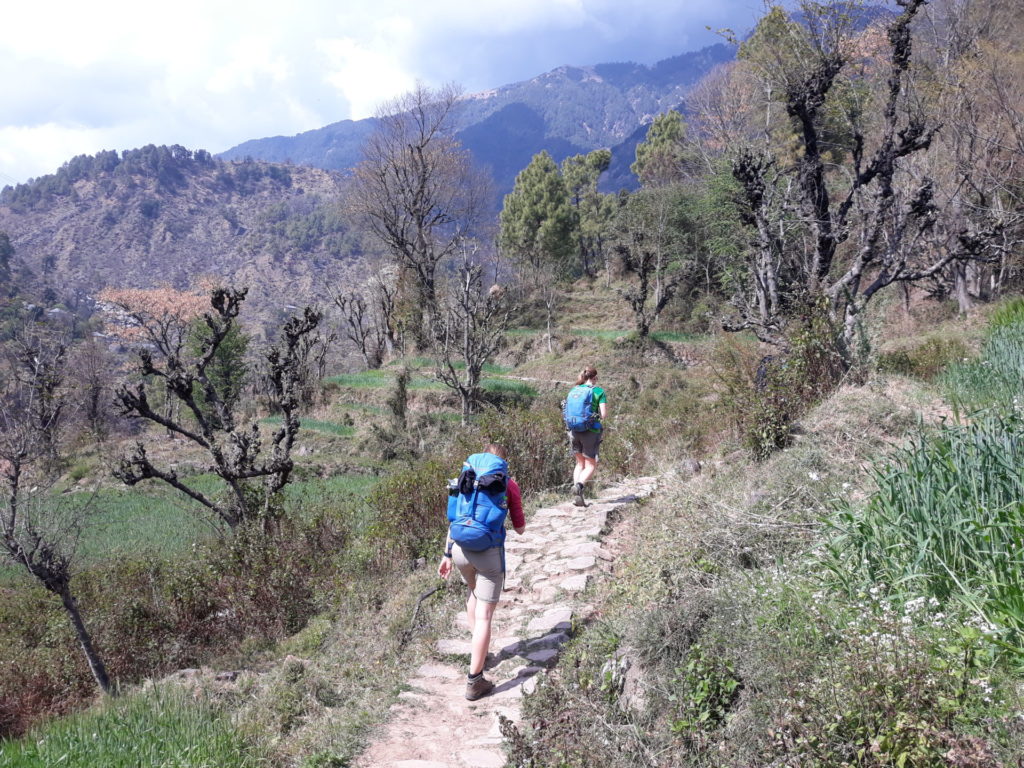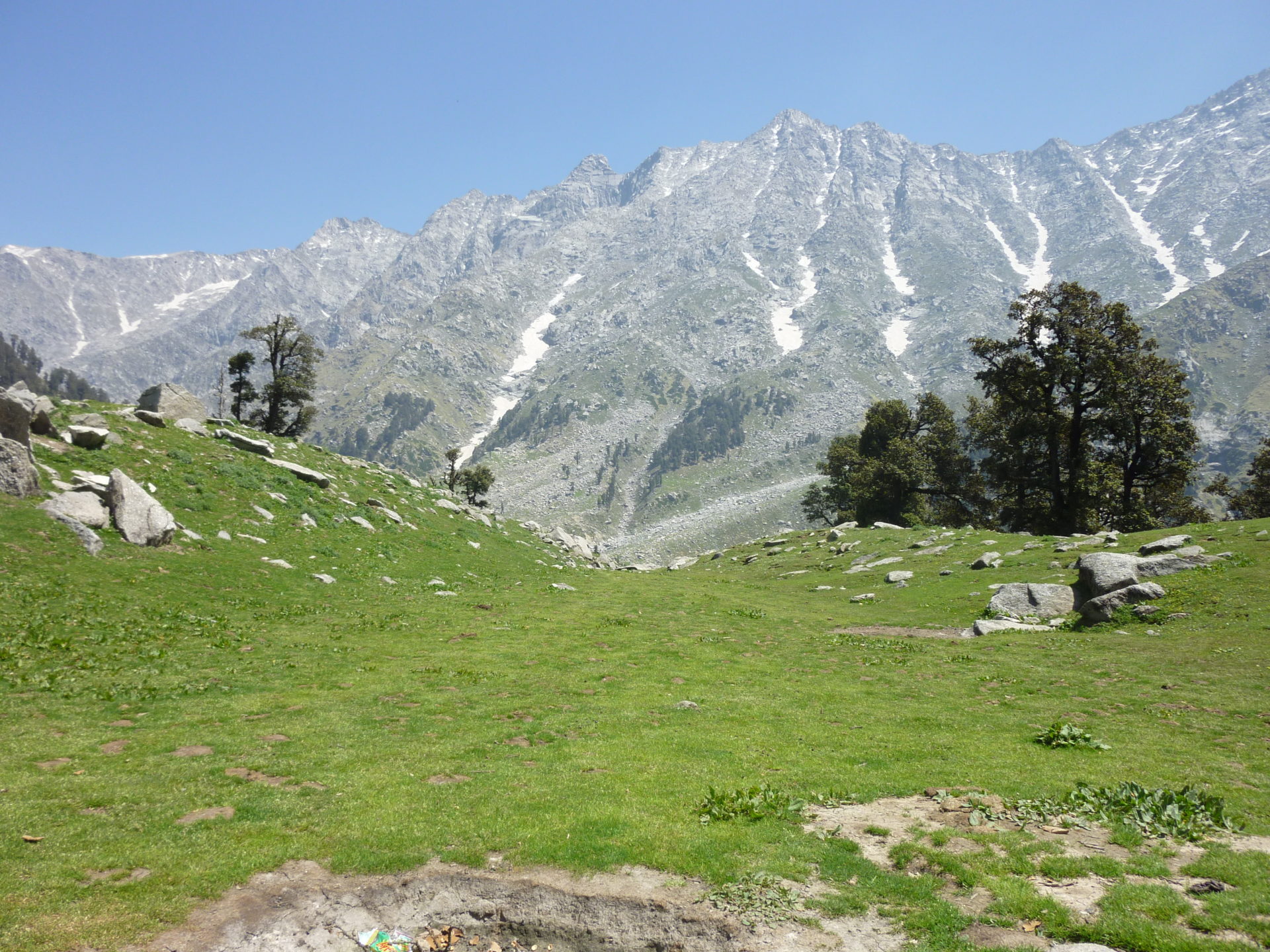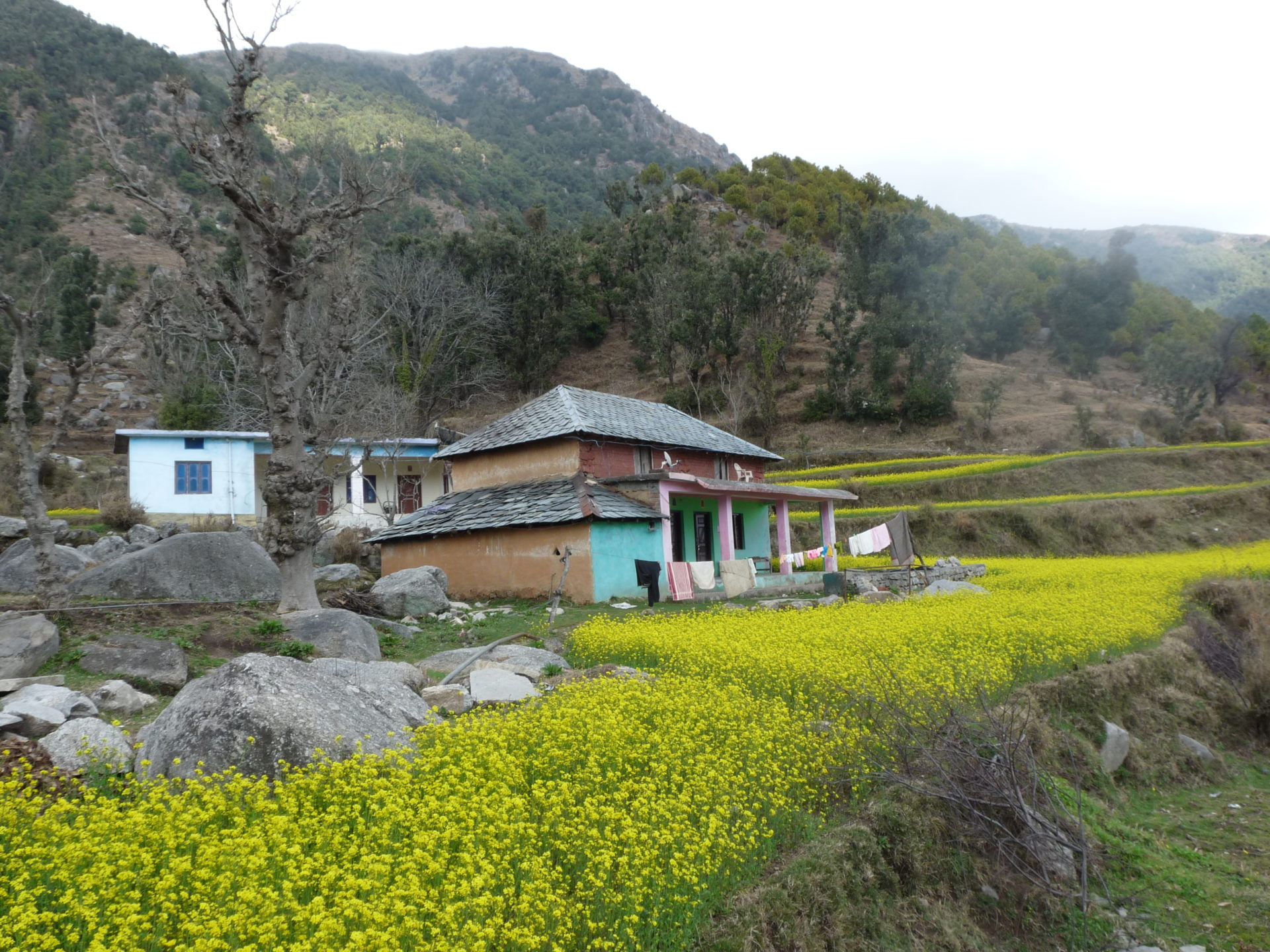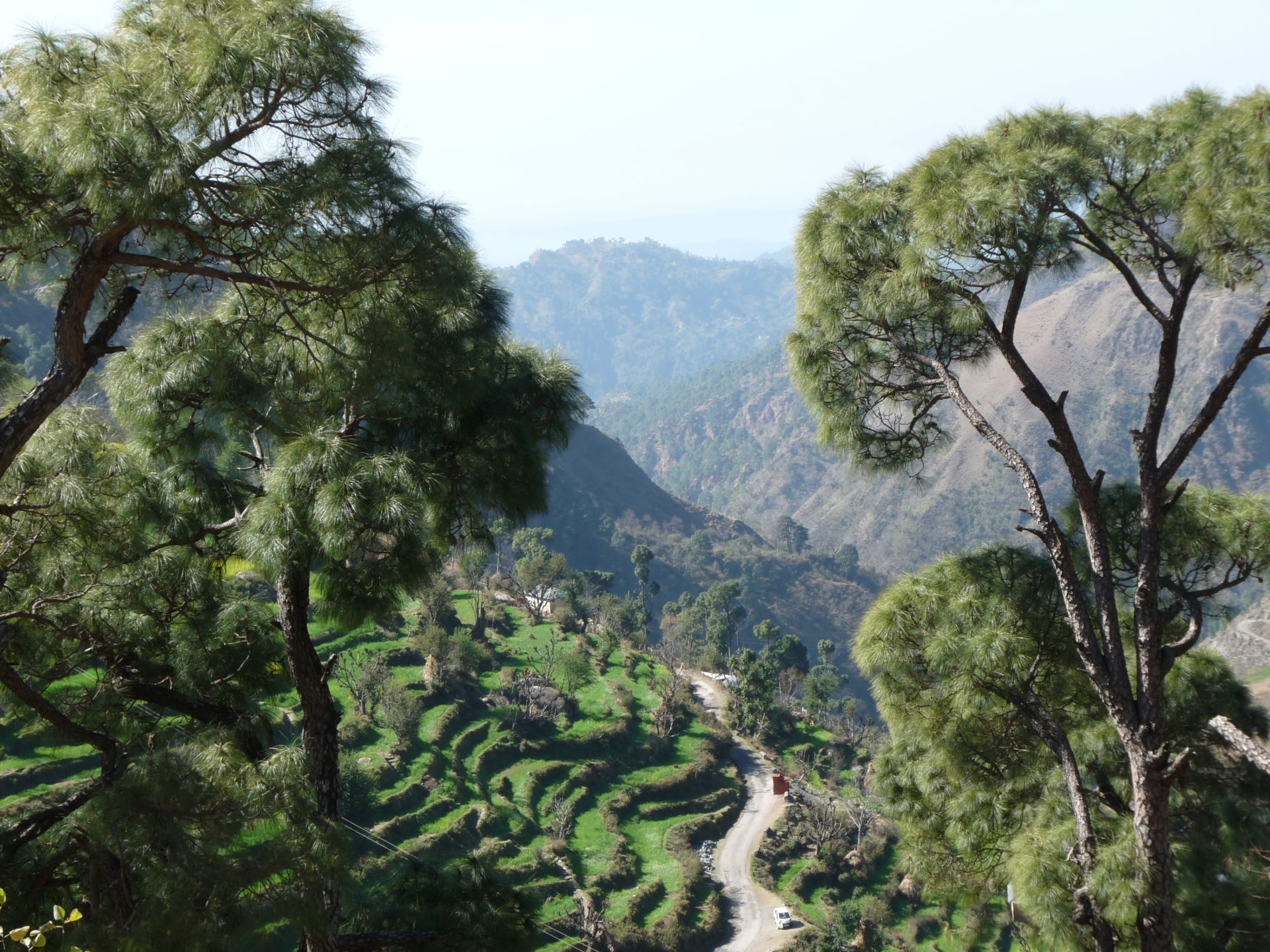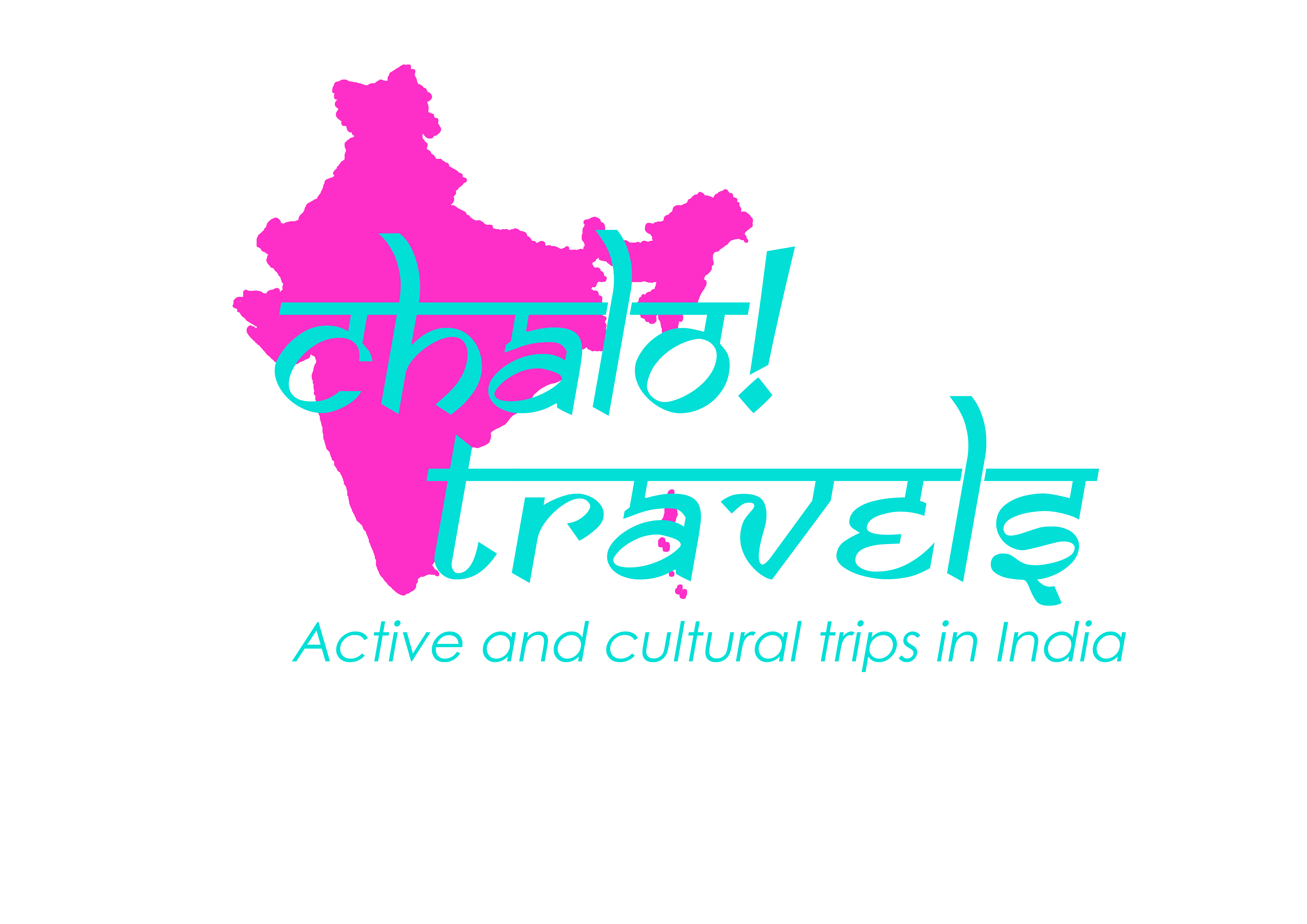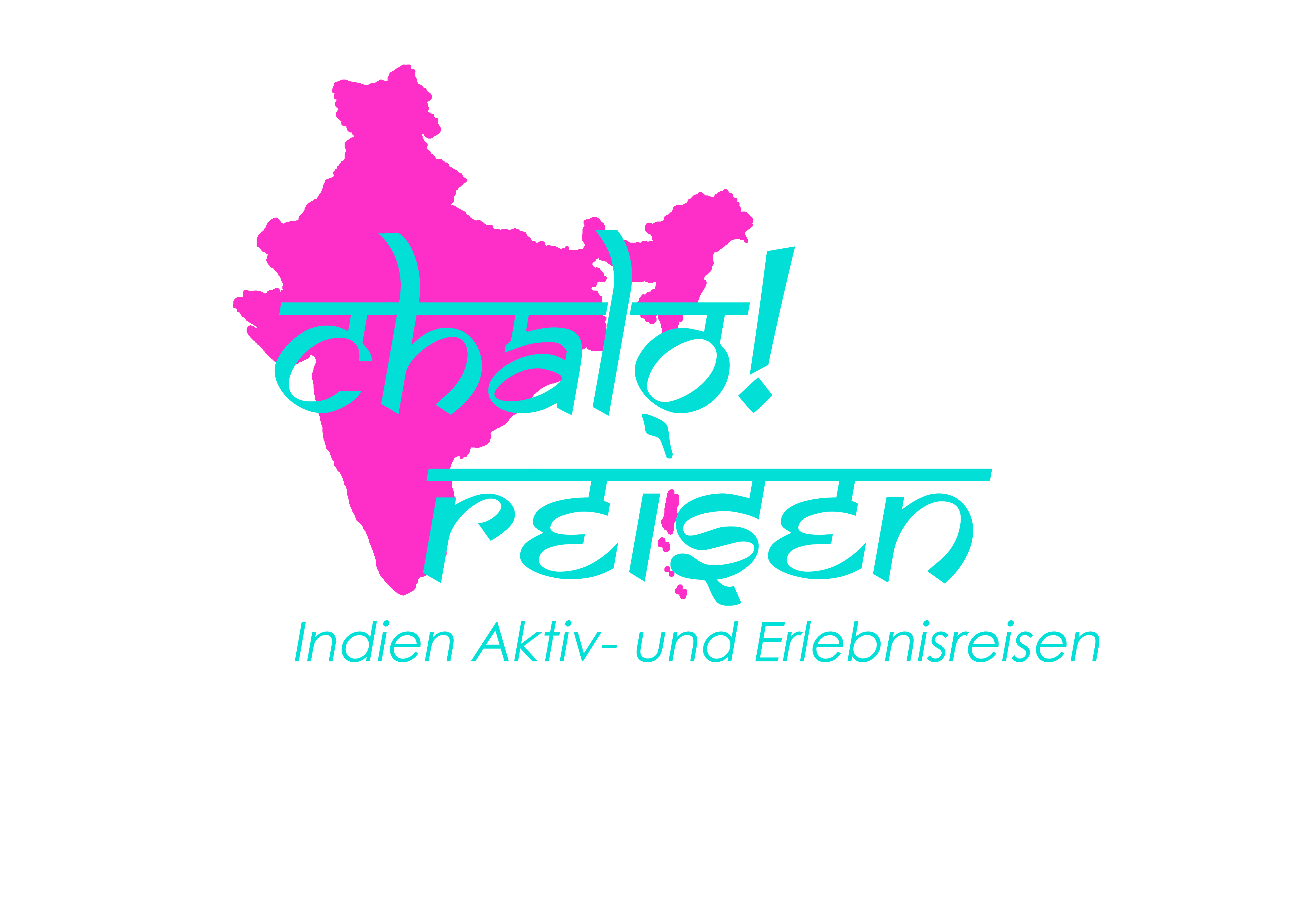- Sport & Abenteuer Reisen
- Trekking Reisen
Overview
This ten-day trek is one of the few multi-day trekking tours in the Indian Himalayas that are already possible in the month of April and May. With this varied trekking tour we will get a cultural insight as well as the scenic charms of the Himalayan region to the full. So we will hike through small mountain villages, climb to sacred mountain lakes and climb high mountain passes.
Program
Day 01: Delhi to Mcleod Ganj by Flight
After our arrival at Delhi Airport at night, we head to a hotel near the airport before we continue to Mcleod Ganj (1, 5 hours) in the morning. After we have checked into the hotel we explore the cozy Buddhist-influenced place – here lives the Dalai Lama – and use the day to prepare the trek. We end the day with a dinner together. Overnight stay at the hotel (B/-/D)
Day 02: Start of the trek: Mcleod Ganj – Kareri village (1800 m)
The Trek passes through coniferous forest and crosses some villages. The village of Kareri is also a tribal village. We camp a bit remotely at a green meadow by the river. Overnight in a tent (B/L/D)
Day 03: Kareri village – Kareri lake (3300 m)
The path always leads steadily uphill. First through old oak forests, later through green forests always along a stream until we reach the holy Kareri lake. This is where we set up our camp. Overnight in a tent (B/L/D)
Day 04: Kareri Lake – Minkiani Pass (4242 m) – Kareri Lake
Today we have a slightly harder trekking day ahead of us; It goes up to the 4242 m high Minkiani Pass. It is a 4.5 km long ascent to the pass, which rewards its great views of the surrounding mountains. Later we go back to our idyllic camp at The Kareri Lake. Overnight in a tent (B/L/D)
Day 05: Kareri Lake – Bagga (3250 m)
After a short ascent from the lake we set off on the steep descent through deep forest into the village of Bagga. Overnight in a tent (B/L/D)
Day 06: Bagga -Bahl (1950 m)
Today we continue down through small villages to the village of Bahl. Overnight in a tent (B/L/D)
Day 07: Bhal Village – Triund (2900 m)
Today we have a slightly longer climb ahead of us. It goes to the famous high pasture Triund. A well-developed path leads us through flowering rhododendron forests and pine forests to Triund. With an amazing view into the Kangra valley and we pitch our tents. Overnight in a tent (B/L/D)
Day 08: Triund- Lahesh Cave (3550 m)
A steady ascent leads us to the forest border and on to rocky terrain to the famous Lahesh cave in which we will spend the night today. Overnight in a cave (B/L/D)
Day 09: Lahesh Cave – Indrahar Pass (4342 m) – Chata (3700 m)
Today we have a long and challenging day of trekking ahead of us: we will cross the 4300 m high Inderhara Pass and even trek over snowfields. For this we will start in the early morning hours. A steep ascent leads us up to the pass. After enjoying the view at sunrise, we go down on the other side. It is a long but exciting descent over snow bridges, green meadows and along clear streams. Here we meet no human soul and set up our camp in Chata, a green meadow. Overnight in a tent (B/L/D)
Day 10: Chata-Kwarsi (2730 m)
It goes downhill steadily: We cross a river and later hike through deep forest to the remote tribal village of Kwarsi near which we set up our tents. We enjoy the hospitality of the villagers and get a little insight into their mountain life. Overnight in a tent (B/L/D)
Day 11: Kwarsi to Lamu (1700 m)
Before we leave the village of Kwarsi, we visit the Shiva Temple. Then we set off for the last stage of the day:Lamu. From here a taxi picks us up and takes us to Chamba, a small town in the remote Chamba valley. Overnight stay at the hotel (B/L/D)
Day 12: Chamba-Mcleod Ganj / 8 hours
Today we return back to Mcleod Ganj by transfer. We can observe the fascinating mountain world from the car. Overnight stay at the hotel (B/-/-)
Day 13: Day in Mcleod Ganj
We use the day for some recreation from the trek, enjoy the Tibetan atmosphere of Mcleod Graj, go shopping, stay in small cozy cafes or visit the Dalai Lama Temple and Tibetan Museum. Yoga and massages can also be booked. Overnight stay at the hotel (B/-/-)
Day 14: Return flight to Delhi and departure
In the morning we take the flight to Delhi. In Delhi we check into a hotel near the airport and can use the day to visit Delhi. Alternatively, a day trip to Agra with a visit to the Taj Mahal is possible. (B/-/-)
Services
- Tour Guide
- 2 x Domestic Flight Delhi-Daramshala/Daramshala-Delhi
- 5 x Hotel accommodations in Delhi and Mcleod Ganj with breakfast in (shared) double room
- 1 x dinner together
- All transfers
- 10 days trekking tour with mountain guide, load horses /carriers, tents, sleeping bags, mattresses, full catering
- International flight
- Unmentioned meals
- Visa
- Trip to Agra (120 €)
Highlights
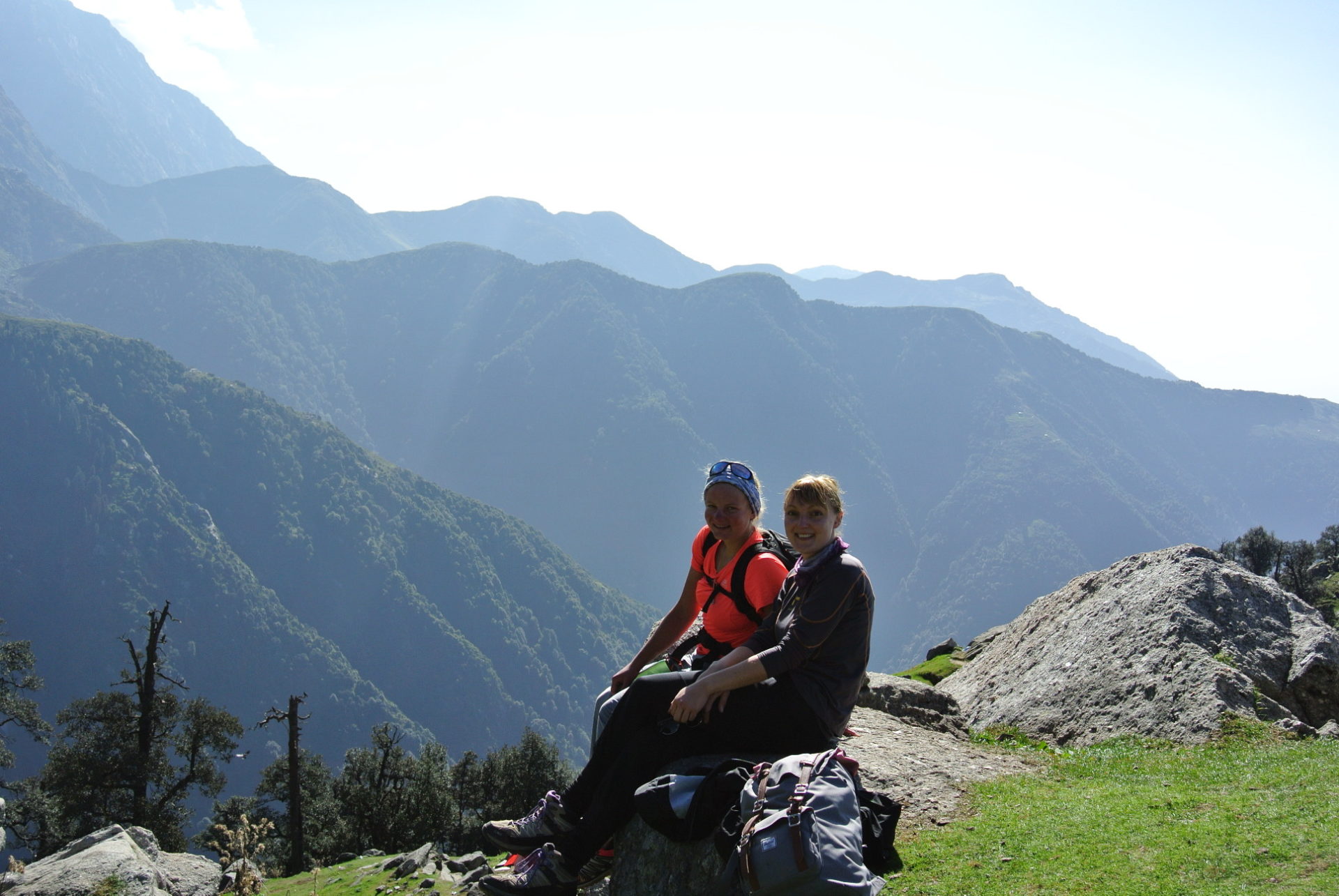
Triund 
View of Dharamsala 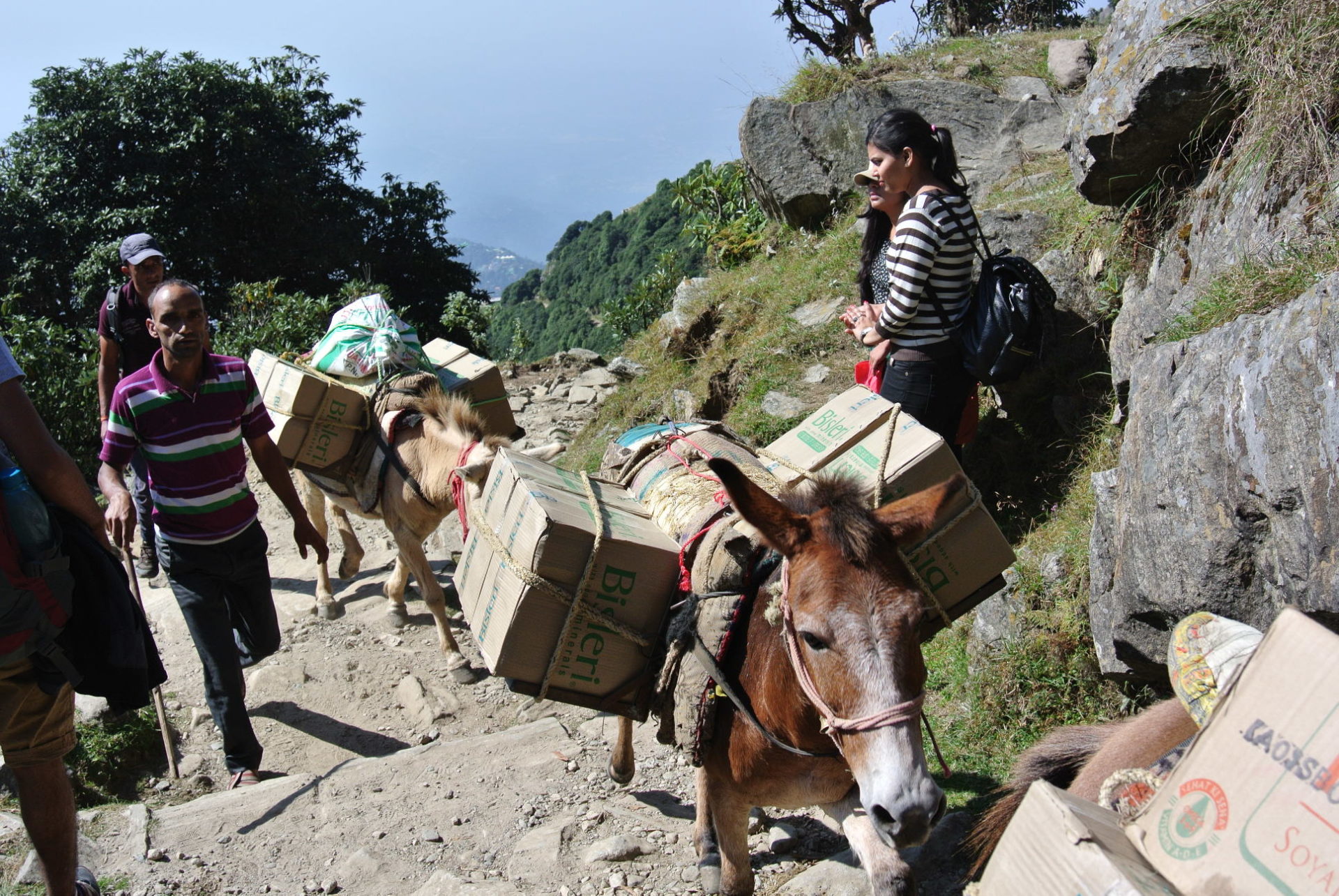
Horses 
Trek to the Indrahar Pass 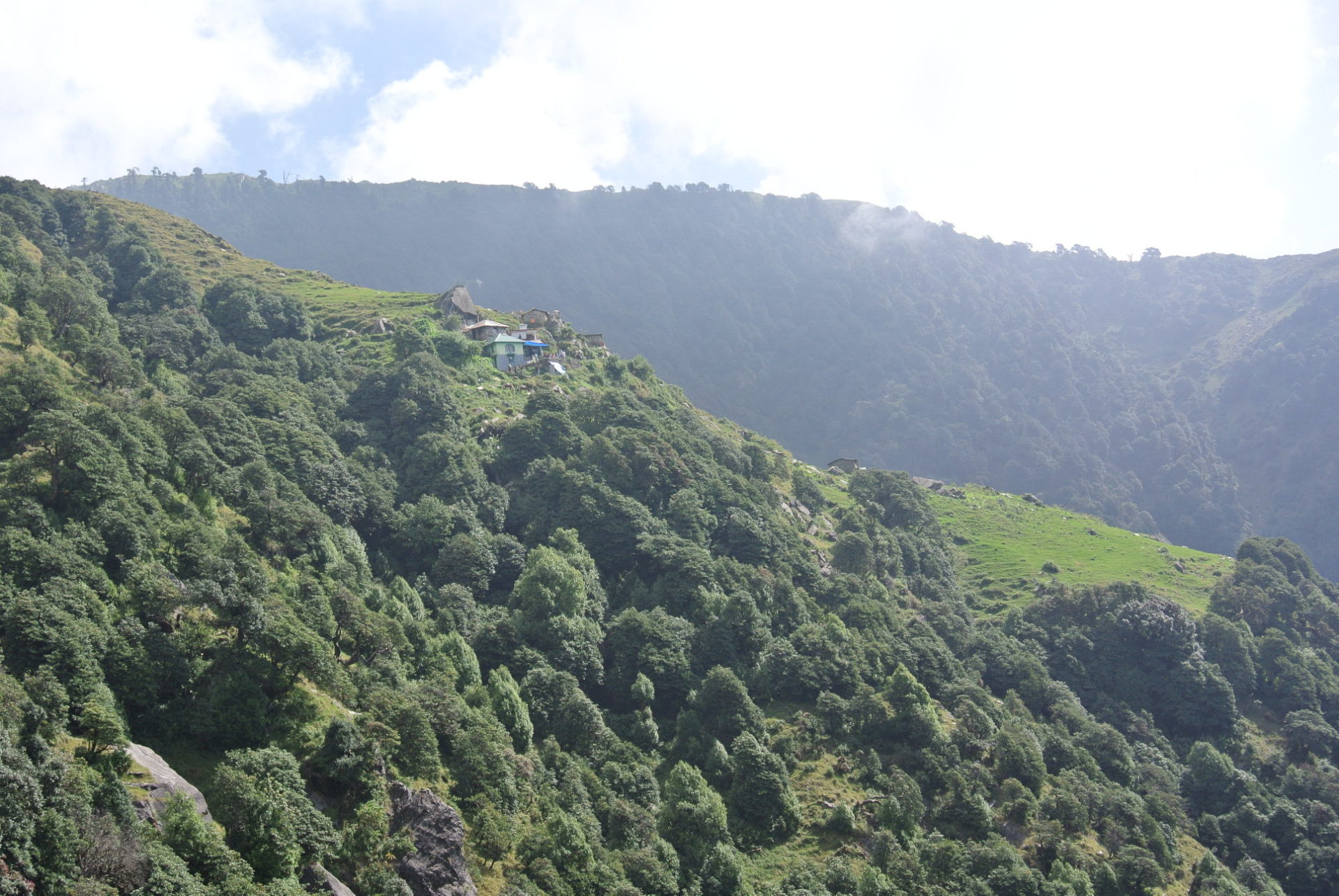
Villages 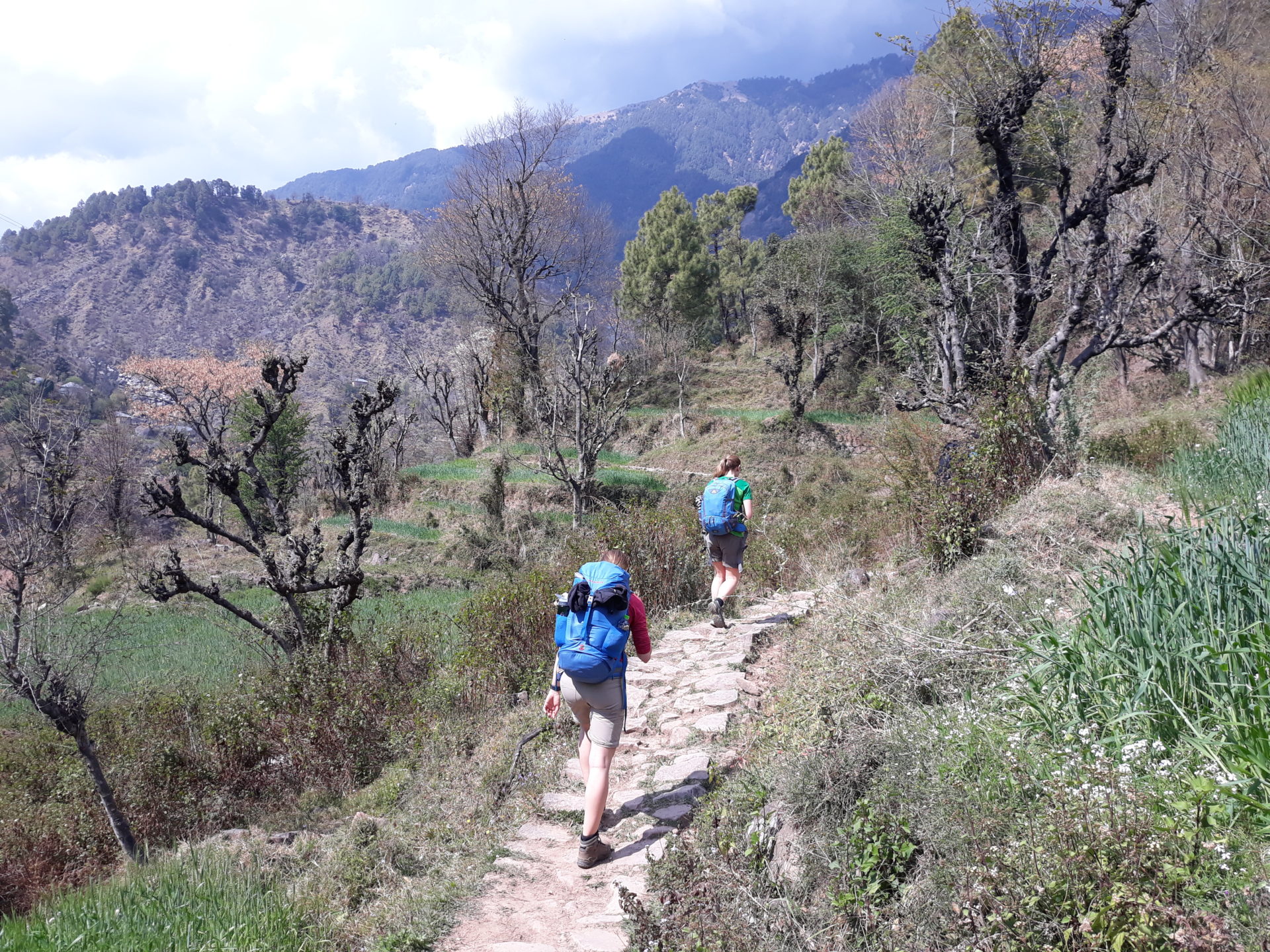
Village Trekking 
up to Kareri See 
River Crossing 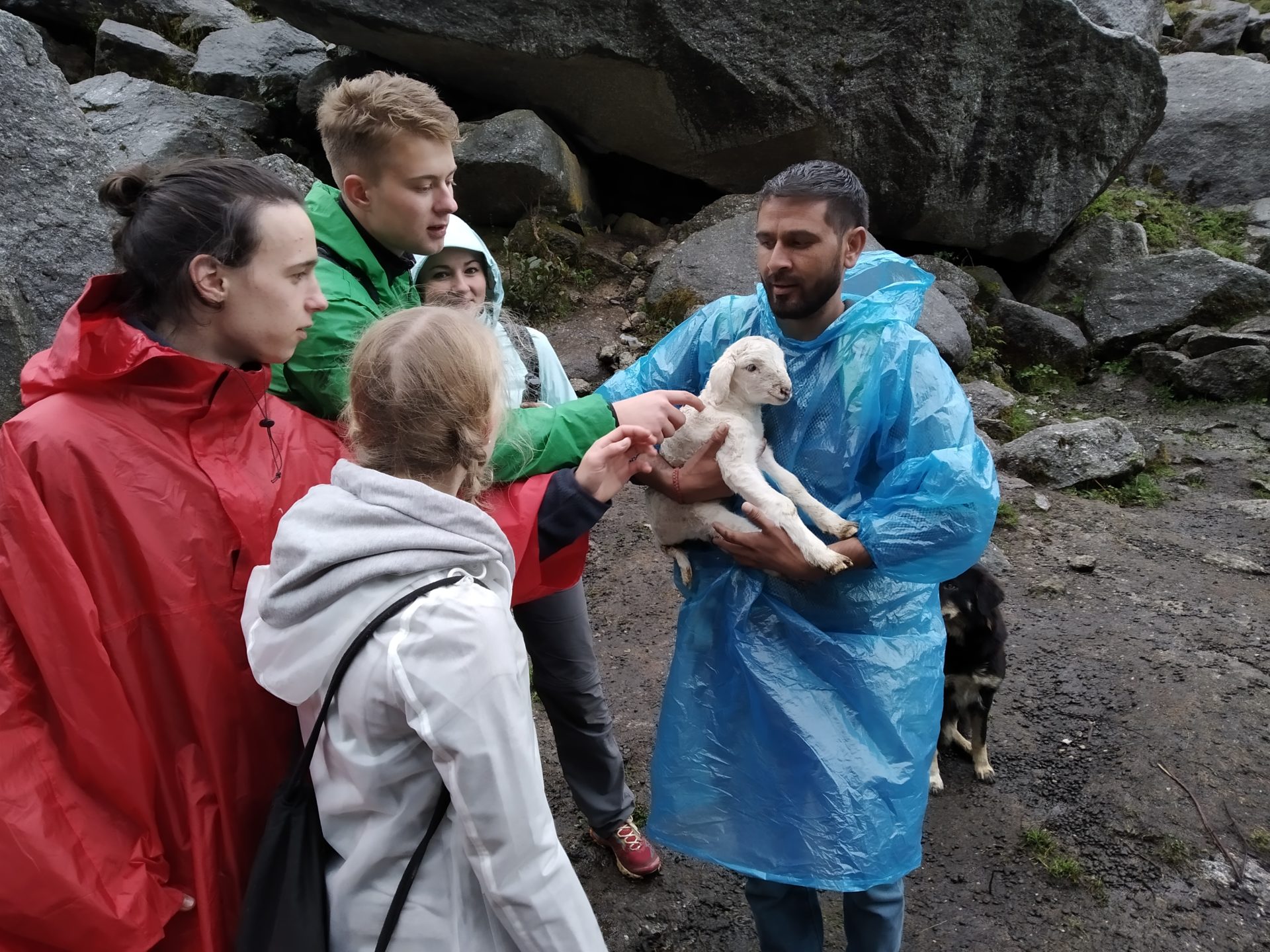
Himalaya Trekking 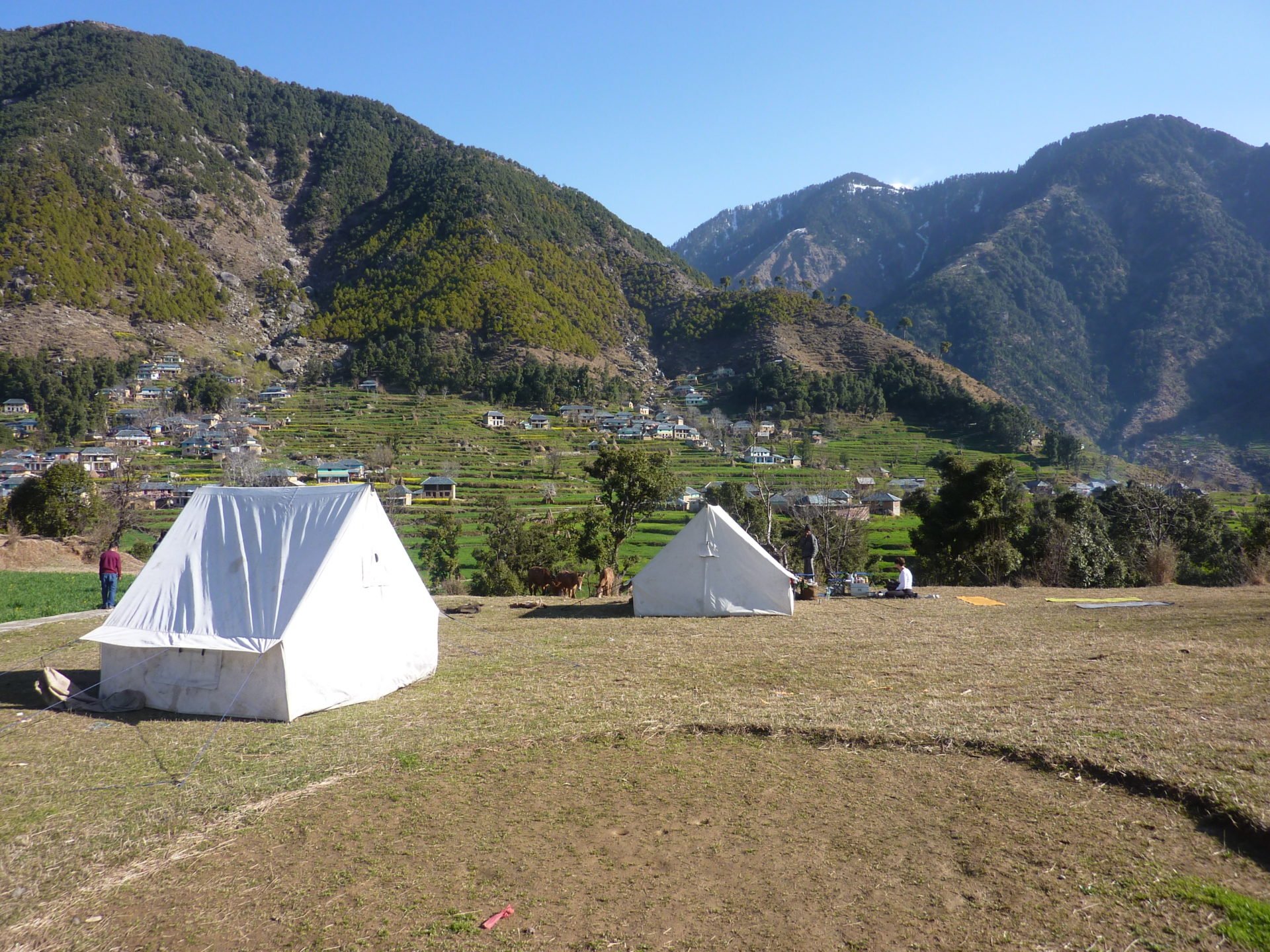
Trek near Dharamsala 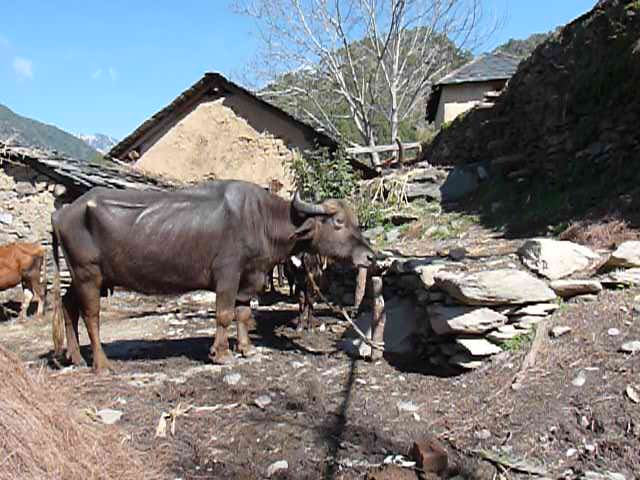
Village 
Lokal Woman 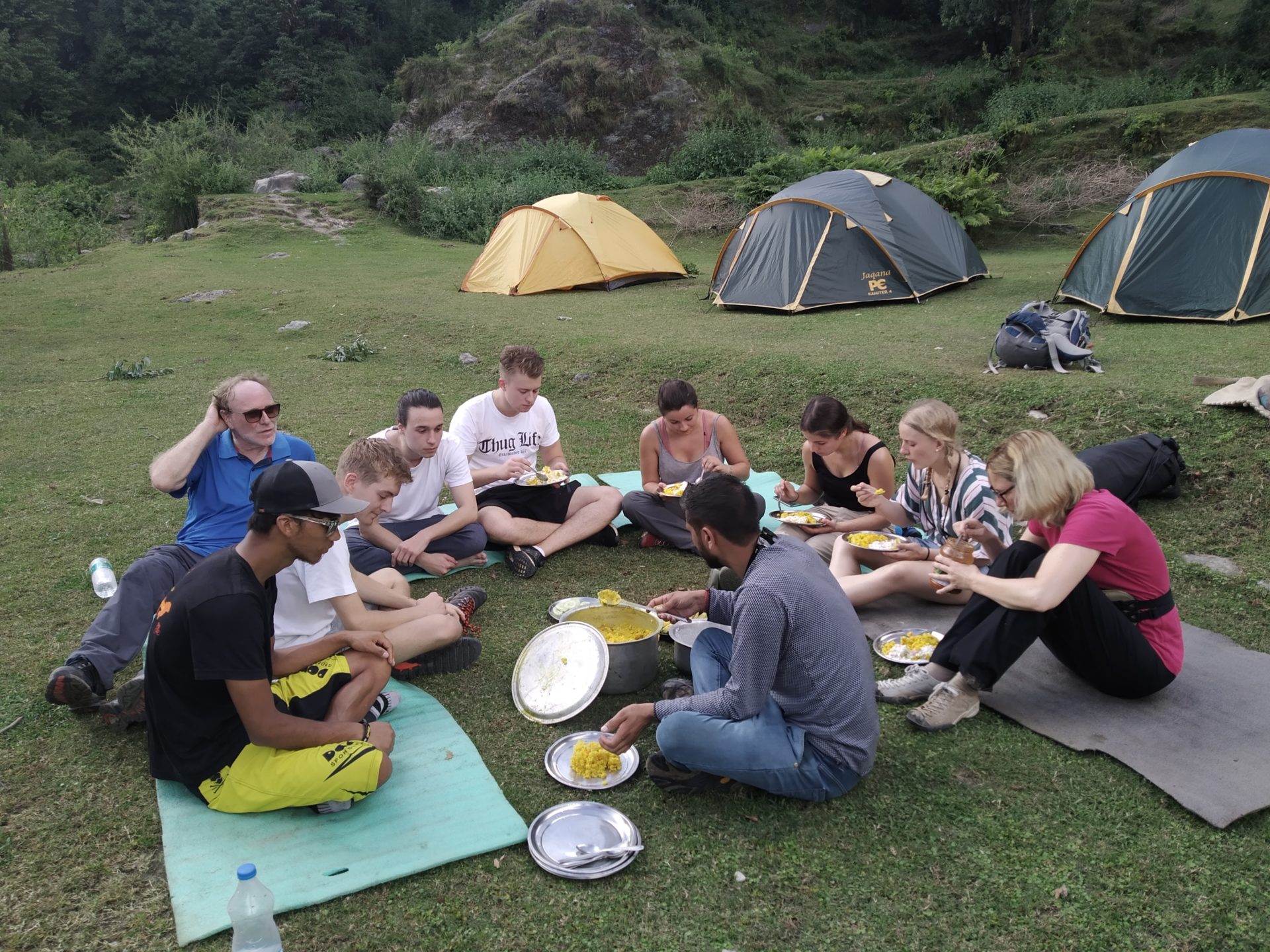
Camp Himalaya Trek 
Himalaya Trekking
Prices and Dates
Best from April to October:
2 participants 1950 € per person
From 4 participants 1650 € per person
Tour Info
Requirements
A multi-day trekking tour requires a good basic endurance. The daily stages of 5-8 hours per day are moderate. It will go up and down again and again. In some cases it goes to heights above 4000 meters.
Information about the Trekking Tours with Chalo! Travels
Mountain guide and trekking team
On all our treks we have at least one (for larger groups of 6 participants two) trained local mountain guide. Our mountain guides have all completed at least the Indian mountaineering training, many of them have also completed the advanced courses.
They are familiar with the trekking routes and know the terrain excellently. All our mountain guides speak English.
In addition, there is a local team consisting of a cook (if the group consists of only two participants, the mountain guide also takes over the tasks of the cook), helpers, horsemen with horses or Nepalese porters, depending on the type of trek.
All our team members have been working with us for years, are very friendly and always strive to provide our guests with a great trekking experience. Their English (besides of the Guide) is rather mediocre or non-existent, but this is not necessarily a hindrance to communicating with them.
Trekking routes
The trekking routes are designed according the skills of our guests and are all feasible for a person with a good fitness level, unless otherwise mentioned. The daily routes are between five and eight hours long (with breaks) and an average increase of around 500-800 metres of altitude is completed.
In between, rivers may have to be crossed. The paths are partly well developed, but sometimes also almost non-existent. On our trekking routes there are hardly any villages in between, so we will take enough food for the whole tour.
On our treks we cross passes, snow or glaciers. On steep slopes, we have safety equipment with us.
Daily routine (Depending on the length and intensity of the trek, the times may vary)
7: 00 am Get up with Tea
7:30-8:30 am Breakfast
7:00-9:30 am Dismantling of the camp
8:00- 9:30 am Start Trek
1:00 pm Lunch on the way
3:00-5:00 pm Arrival at the camp and camp construction
3:30-5:30 pm Snacks
7:00 pm Dinner
Altitude and altitude sickness
Altitude sickness is a very important topic that should not be underestimated, especially during our trekking tours in the Indian Himalayas. At altitudes above 3500 m, our body has to slowly get used to the low air pressure, which also causes less oxygen to enter our lungs. The first signs of altitude sickness are headaches, which are accompanied by dizziness, nausea, insomnia and loss of appetite. It becomes problematic when water accumulates in the lungs and brain and edema occurs. Then only the immediate descent to lower altitudes will help. To prepare for the heights on our treks, we will either spend a few nights at high altitudes before the trek or slowly ascend during the trek to acclimatize. If we notice that there are problems with our guests (each person is otherwise able to acclimatize, regardless of age, gender and fitness level), it may happen that either the entire group or the concerned participant descends/returns with a team. In addition, it makes sense to take an emergency drug for altitude sickness. For this, it is best to consult the pharmacy or the travel doctor. For certain treks we will also have oxygen with us.
Luggage
Each trekking participant is responsible for his own clothes and personal belongings. Depending on the trek, we are either with horses or porters. If we have load horses, one bag per participant can be loaded onto the horse. In the case of treks with porters, all personal luggage must be carried independently. Tents, sleeping bags, mattresses and food are carried by our porters.
For trekking tours with horses, a day backpack with space for the lunchbox, a water bottle and warm overcoat clothing should be taken with you. Here to the complete packing list for our trekking tours.
Packing list for trekking tours
- sleeping bag at least -10°C
- large backpack or soft carrying bag so that the load animals can carry the luggage
- Small carrying backpack for the day approx. 30-40 l with rain protection
- flashlight/headlamp
- 2 refillable water bottles
- hiking poles
- passport and passport copy
- camera with spare battery and memory card
- headgear as sun protection
- Good Sunglasses
- cap
- Scarf, Buff
- Gloves
- wind-proof trekking pants
- trekking pants
- Functional Underwear Long
- hiking boots
- socks thick and thin
- sneakers, sandals and/or slats
- windbreaker
- Warm Jacket
- fleece sweater/jacket
- Tshirts
- sunscreen, lip balm min. Protection 40
- fat cream
- water purification tablets (boiled and filtered water is provided)
- own medications for headaches, nausea, digestive problems, colds)
- bubble patches and dressing material
- own hygiene articles
- Toilets Paper
- hand disinfection
Meals
During the trek there will be a vegetarian full catering. Water is either boiled or we have a water filter with us.
Breakfast (daily selection):
- Coffee/Tea
- Oatmeal porridge/muesli/cornflakes/Indian porridge
- Indian breakfast
- Sliced fruit/vegetables
Lunch (mostly lunchbox), sometimes warm in the camp
- Sandwiches/Indian (rice, chapati, vegetables)/potatoes
- Juices
- Chocolate
- Fruit
Snacks
- Tea/coffee
- Cookies
- French fries/Indian snacks
Soup
Dinner (depending on the length of the Trek mix of Indian/Chinese/Continental)
- Vegetable dish
- Lentil dish
- Rice/noodles
- Chapati
- Salad
- Dessert
Accommodation and camp
We have very comfortable and spacious two-man tents. Our mattresses are practical but simple if there are problems with sleeping on hard surfaces, please take your own mattress with you or order from us. Our sleeping bags are freshly washed and have a very good quality with comfort zone up to -5°C/extreme zone up to -20° C. It is recommended to bring personal indoor sleeping bags.
In addition, we have a spacious dining tent with tables and chairs, a kitchen tent for the team and a toilet tent. For treks up to 4 people, the kitchen tent can also act as a dining tent at the same time.
For trekking tours with porters, we will take our smaller, lighter tents with us and do without a toilet tent.
Weather
In the Himalayas, temperatures fluctuate widely. While it can get warm up to 25°C during the day and the sun is not only warming, but also very intense (sun protection is a must), it can also cool down significantly below the minus-grade at night, especially in the months end of September and October, as well as in June. There may also be weather changes with snow on the passes.


